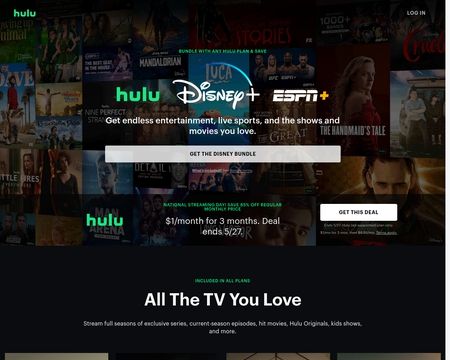

- Hulu desktop app sucks how to#
- Hulu desktop app sucks movie#
- Hulu desktop app sucks drivers#
- Hulu desktop app sucks professional#
Whatever are your business objectives, models, or use cases, it’s your prerogative. Religious groups are using streaming media to grow their congregations. Governments are using live broadcasting to comply with open-meeting laws. Sporting leagues are using live streaming to bring matches to their fans, wherever they are. Media organizations are streaming live news. Nonprofits are using live streaming to bring major events to a larger audience. Businesses are broadcasting live video streams for product demos and tutorials. Live streaming is catching on in business, transforming the ways social media marketing campaigns are run. Moreover, 80% of consumers agree that corporate live videos are engaging, add credibility and humanize the brand. There’s a huge potential for video-on-demand (VOD) platforms in education, media & entertainment, e-commerce, healthcare and other areas. The video streaming market is estimated to be a $70.5 billion industry by 2021.
Hulu desktop app sucks professional#

Access: anytime anyplace with consistent internet connection.Storage space: no more downloads to a laptop, desktop, or phone.Over-the-top video streaming is gaining ground
Hulu desktop app sucks how to#
So there! You’re smart enough to know how to start a video streaming website.
Hulu desktop app sucks drivers#
And the streaming protocol is the railroad tracks, signals, and drivers that deliver it to the destination. The container format is a boxcar where these bundles are packed in. The codec will be a machine that compresses the clothing into a bundle to save space. Imagine you are a delivery service transporting goods, like clothing, in bulk (the goods are the video). In case techy parlance like ‘streaming protocol’, ‘codec’, or ‘container format’ scares you, here’s a journey metaphor. So video streaming, huh? Tell me about it! Video streaming works by breaking a video into small chunks and sending them via the net to get reassembled and played at their final destination. Wonder what happens after live videos are no longer so… erm… ‘live’? Periscope and Snapchat leave them up for 24 hours ( FOMO, you know), FB keeps them forever. But who doesn’t like sports, news, or concerts – LIVE?! Never miss an event in your life! Isn’t it cute? Live stream to someone special (one-to-one) or to the whole tribe (one-to-many), and even get feedback (two-way). Of course, you need huge computing resources and oftentimes specific hardware support. It’s captured, compressed, and transmitted in real-time. But even if you didn’t ask for it to play (remember those annoying ads that start playing by themselves?) it’s still ‘on-demand’. It’s stored on servers and delivered to one or multiple users ‘by request’. On-demand video is pre-recorded and compressed. But live streaming is also big on Facebook and other social networking sites. Netflix and Amazon Prime specialize in on-demand video. Why not?! YouTube’s initial concept of a video sharing site has evolved to perfectly house both pre-recorded and live streaming options. Oh, I get it! Another YouTube rabbit hole! So what does it mean to build a video streaming server? The only difference is the medium – it’s delivered via the web (aka ‘over the top’). So a streaming video website is akin to television. In fact, streaming files can be hard to save (yeah, your copyright is safe). It transmits data as a continuous flow, so you can watch or listen almost immediately.
Hulu desktop app sucks movie#
And you want your movie RIGHT NOW! Well, video streaming service is your oxygen. Over-the-top video content, eh? Away with downloads! Video streaming service rules!ĭownloads suck! The waiting. BONUS! Video streaming website: a startup kit.Study the video streaming server requirements.Understand a streaming website architecture.How to choose a technology stack for a video streaming site.Video streaming website: user-facing features.


 0 kommentar(er)
0 kommentar(er)
